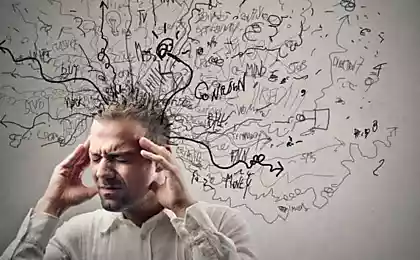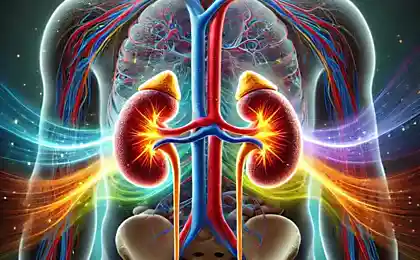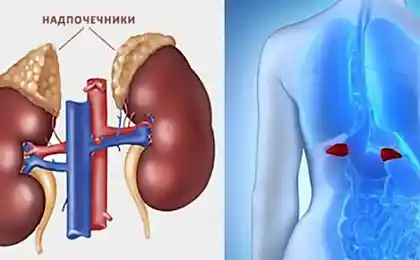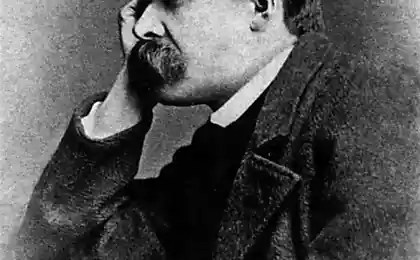338
How to walk for the benefit of your psyche
A scientific approach to simple pleasure

In today’s world, where every minute is painted by seconds, and the brain is constantly overloaded with information, we forget about the easiest and most affordable way to restore mental health. Walking is not just moving from point A to point B. This is a powerful psychotherapy tool that works at the neurochemical level and can radically change your emotional state.
Just 40 minutes of walking a day can replace expensive psychotherapy sessions and become a natural antidepressant without side effects.
Why 40 minutes?
The number “40 minutes” is not taken from the ceiling. This is the result of many years of research by neuroscientists and psychologists studying the mechanisms of stress reactions. When faced with stress, the adrenal glands release adrenaline and cortisol into the blood, hormones that prepare the body for the fight-or-flight response. In modern life, these hormones often remain unused, accumulating in the body and causing anxiety, irritability and depressive states.
A Stanford University study found that 38 to 42 minutes of moderate physical activity is needed to fully utilize the stress hormones accumulated during the day.
It is after a 40-minute walk that a cascade of biochemical reactions starts: cortisol levels decrease by 23%, endorphins – natural “happiness hormones” – begin to be produced, and serotonin reaches the optimal concentration to maintain a stable mood.

The Disconnected Mind Rule
The second key principle of therapeutic walking is to free the brain from the need to process complex information. Modern man is constantly in a state of cognitive overload. We listen to podcasts, read news, think about work tasks and plan for the future.
The brain is not a computer. It needs a reboot like a smartphone after a long day of work.
During the "right" walk, it's important to give up podcasts, audiobooks, difficult thinking about work or personal issues. This principle is based on the discovery of the mode of the brain resting network (Default Mode Network) - a special state in which neurons self-cleanse, memory consolidation and creative insights occur.
What you can do while walking:
- Counting steps or breathing cycles
- Monitoring the environment without analysis
- Listen to the sounds of nature or city
- Focus on the physical sensations of walking
- Practicing gratitude for simple things
Looking Away: The Neurobiology of Visual Recovery
The third element of the therapeutic walk is the direction of gaze into the distance. This is not just romantic advice, but a scientifically sound recommendation. Our eyes are evolved to view distant objects. Constant focus on close objects - screens, books, documents - causes not only physical tension of the eye muscles, but also activates the sympathetic nervous system, responsible for stress reactions.
Ophthalmologists call this “near vision syndrome.” When looking at objects further than 6 meters, the parasympathetic nervous system is activated - a natural "brake" of stress.

When we look into the distance while walking, several important processes occur: the ciliary muscles of the eyes relax, the production of adrenaline decreases, the vagus nerve is activated, which triggers the relaxation reaction. Japanese researchers found that contemplating the horizon for 10 to 15 minutes reduced blood stress markers by 31 percent.
Daily life as a key to success
The fourth principle is regularity. The neuroplasticity of the brain — its ability to form new neural connections — works on the principle of “use or lose”. One-time walks provide temporary relief, but daily practice is necessary for lasting changes in the psyche.
Studies show that after 21 days of daily 40-minute walks, a stable neural network is formed, responsible for emotional stability and stress resistance.
The story of Maria, a programmer from Kiev, illustrates the power of this approach. After burnout at work, she began to walk daily in the Mariinsky Park, following four principles. After a month, her cortisol levels returned to normal, her sleep improved, and three months later she was able to return to work with renewed enthusiasm. "I just walked and looked at the trees," she says. No complicated techniques, no applications. Just walking.
Practical recommendations for maximum effect
The optimal time for walking:
- In the morning (7:00-9:00) - for energy for the whole day
- After work (17:00-19:00) – to relieve accumulated stress
- Before bed (for 2-3 hours) – to improve the quality of sleep
Ideal routes:
- Parks with large open spaces
- River or lake embankments
- Quiet residential areas with trees
- Any place with minimum transport and maximum horizon
It is important to understand that a therapeutic walk is not a sport. No need to aim for high pace or record distances. The optimal speed is such that you can talk calmly without suffocating. Approximately 4-5 km/h.
Scientific evidence of effectiveness
A meta-analysis of 50 studies published in the journal Environmental Science & Technology confirms that regular walks in nature reduce the risk of depression by 71%, improve cognitive function by 20% and improve overall quality of life. Walking is especially effective for people suffering from anxiety disorders - 89% of the participants in the experiment showed a significant improvement in their condition after two weeks of practice.
Professor Mark Berman of the University of Michigan found that even photographs of natural landscapes viewed while walking increased walking efficiency by 15%.
A therapeutic walk is a return to the origins of human nature. In the digital age, we have forgotten that our brains are made for movement and our eyes are made for infinity. Four simple rules – 40 minutes, a disconnected mind, a gaze into the distance and daily life – can transform not only your mood, but your entire life. Start tomorrow. Start today. Your psyche will thank you.
Glossary
adrenaline
A stress hormone produced by the adrenal glands in response to a danger or stressful situation. Prepares the body for active action.
cortisol
The main stress hormone that regulates metabolism and the immune system. With chronic increase causes anxiety and depression.
endorphins
Natural “happiness hormones” produced by the brain. They have analgesic and antidepressant effect.
serotonin
Neurotransmitter responsible for mood, sleep and appetite. A lack of serotonin has been linked to depression and anxiety disorders.
Default Mode Network
The resting network of the brain is a system of neural connections active in a state of rest. Responsible for introspection, creativity and memory consolidation.
Neuroplasticity
The ability of the brain to change its structure and function in response to experience. Basic training and recovery after damage.
Parasympathetic nervous system
Part of the autonomic nervous system responsible for relaxation, recovery and digestion. Antagonist of the sympathetic system.
vagus nerve
The longest cranial nerve connecting the brain to internal organs. Activation of the vagus nerve triggers a relaxation response.
Nihilism of the goal: where does the road to nowhere begin?
How to Increase Serotonin and Dopamine Levels























